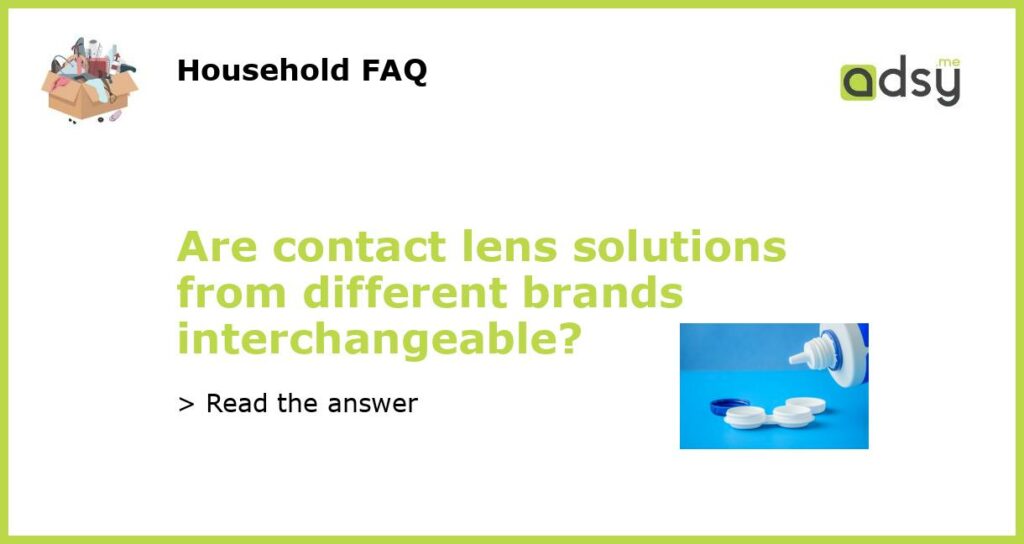Wearing contact lenses requires not only the correct prescription and fit but also proper cleaning and maintenance. Contact lens solutions play a critical role in maintaining clean, clear and comfortable lenses. With so many brands of contact lens solutions available in the market, one may wonder if they are interchangeable. This article explores the compatibility of different contact lens solutions and compares the pros and cons of using various brands interchangeably.
What are contact lens solutions?
Contact lens solutions are sterile liquids that are specifically designed to clean, disinfect, store and rinse contact lenses. They also help to lubricate and hydrate the lenses, keeping them comfortable to wear throughout the day. There are various types of contact lens solutions including multipurpose, hydrogen peroxide-based, saline and enzymatic solutions.
Are contact lens solutions interchangeable?
The short answer is, it depends. While all contact lens solutions serve the same basic purpose of cleaning and maintaining contact lenses, there are differences in their formulations, ingredients, and compatibility with different types of contact lenses. While some contact lens solutions may be compatible with certain types of lenses and materials, they may not be suitable for others. Therefore, it is essential to follow the manufacturer’s instructions and recommendations for the specific contact lens solution prescribed for individual lens wearers.
Pros and cons of using different brands interchangeably
Pros:
- Flexibility: Using different brands of contact lens solutions provides lens wearers the flexibility to switch to alternative brands if their current solution is unavailable or discontinued.
- Cost savings: Different brands of contact lens solutions come at different price points. Using interchangeable alternatives may allow lens wearers the opportunity to find more affordable solutions, saving costs on their lens maintenance.
- Variety: Different brands of contact lens solutions may provide different levels of comfort and cleaning capabilities, allowing lens wearers to experiment and find the best solution that suits their individual needs.
Cons:
- Risk of complications: Switching to a new brand of contact lens solution may increase the risk of lens wearers developing allergic reactions, infections or other complications related to the change in the solution’s ingredients and formulation.
- Compatibility issues: Not all contact lens solutions are compatible with all types of contact lenses. Using the wrong type of solution may lead to lens discolouration, reduced clarity or damage to the lenses over time.
- Reduced effectiveness: Even if different brands of contact lens solutions are said to be interchangeable, there may be variations in their effectiveness in cleaning and disinfecting lenses.
While it may be tempting to use different brands of contact lens solutions interchangeably, it is crucial to consider their compatibility with the type of lenses being used, instructions from the manufacturer and recommendations from eye care professionals. Opting for compatible solutions and following proper lens maintenance practices can help reduce complications and ensure clear, comfortable lens wear.






